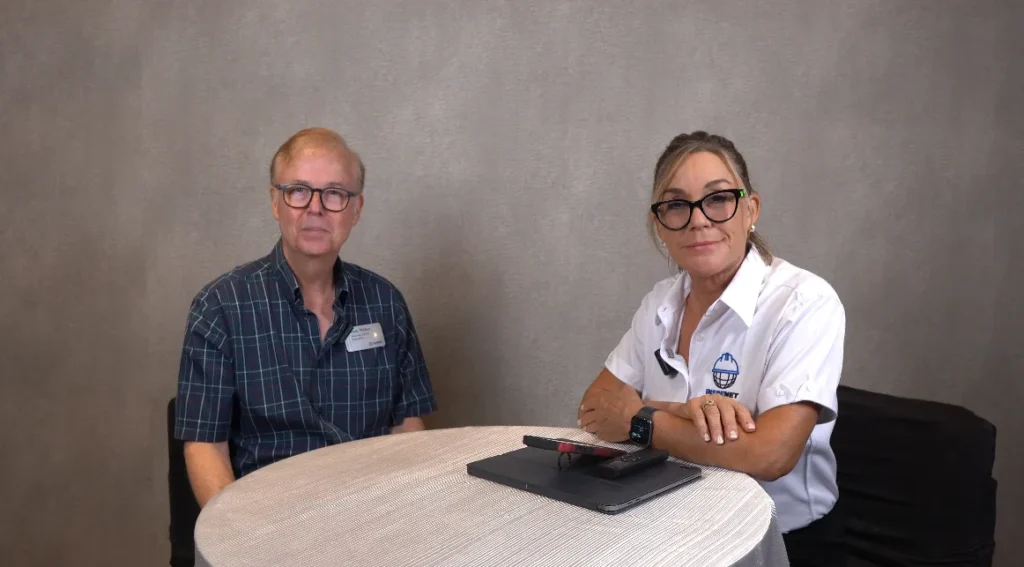With more than 35 years of experience in corrosion prevention, Tom Webber, a specialist in protective coatings for pipelines, has witnessed the technical evolution of the industry since 1984, making him an authoritative voice in the energy and industrial sector. In a recent conversation during LatinCORR 2025, Webber addressed the main challenges facing the industry today, such as technologies that have not changed dramatically, increasingly adverse weather conditions and, above all, a growing shortage of qualified personnel.
The Association for Materials Protection and Performance (AMPP), to which it belongs, plays a key role in the training and professionalization of the technical workforce, a decisive factor in successfully tackling the problem of corrosion in industrial pipelines.
Corrosion in industrial pipelines is not only limited to the appearance of rust; its impact can generate structural failures, compromise operational safety and considerably increase maintenance costs. Webber pointed out that the real expense is not in the coating materials. The real expense is not in the coating materials, but in the excavation, repair and replacement when the system fails ahead of schedule.
For example, 20% of U.S. military assets are unusable due to corrosion, highlighting the direct economic impact of the problem. Therefore, prevention through good coatings and well-trained applicators is essential to reduce costs and increase the service life of infrastructure.
According to Webber, coating technologies have evolved more in their application and inspection than in their composition, with many materials still decades old. However, improved training, driven by AMPP programs, has raised the quality of applications and reduced premature failures.
On the other hand, climatic variations, with heavy rains and frozen soils in certain regions, make it difficult to apply liquid coatings such as epoxies, which require dry and controlled conditions. In the face of this, solutions such as wax tapes offer greater versatility, as they do not depend on the dew point or specific temperatures for application. In extreme environments such as deserts or areas with very cold climates, these technical differences translate into significantly different costs and times.
However, the lack of qualified applicators, inspectors and technicians is, according to Webber, the main obstacle the industry faces in combating corrosion in industrial pipelines. This shortage is evident both in the United States and in emerging countries such as Guyana, where even with a growing oil industry, the lack of trained talent limits its development.
Against this backdrop, AMPP has intensified its educational efforts, with programs aimed at attracting young people from high school onwards, before they choose a university career. The aim is to show that a technical career in corrosion control is not only viable, but also essential for the safe operation of key industries.

The problem of talent shortage is not solved in the short term and AMPP is developing programs to train workers, technicians and engineers from their first educational steps to attack the problem. This includes collaborations with schools, vocational training centers and universities to raise awareness of the importance of the sector.
Research is also a fundamental part of the fight against combatting corrosion, helping to develop new materials, moreResearch, helping to develop new materials, more efficient coatings and more sustainable processes requires constant investment. AMPP, aware that it is not enough to wait for the funds to arrive, has created the RETA committee to actively encourage government funding for R&D in materials protection.
By linking up with universities and public entities, the association seeks to position corrosion as a strategic problem that deserves budgetary attention. The key is to demonstrate, with concrete data, the economic return of investing in prevention and technology.
Corrosion in industrial pipelines is not a minor issue; it represents a technical, economic and human challenge that requires coordinated action. Tom Webber's experience makes it clear that, although technology has advanced, the real change lies in the quality of those who apply, inspect and design protection systems.
Investing in technical training, adapting to new climatic environments and promoting research are essential pillars for ensuring safer infrastructures. And on that path, organizations like AMPP are leading the change, from classrooms to pipelines buried hundreds of kilometers away.
For more content about LatinCORR 2025, please visit our YouTube channel and our LinkedIn profile.
Source: Inspenet.